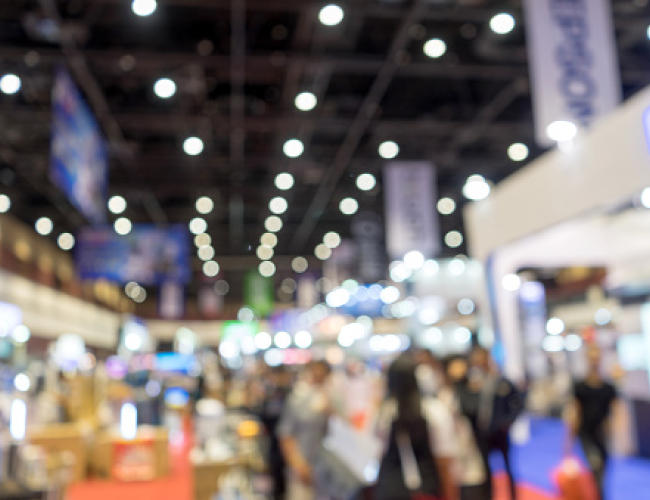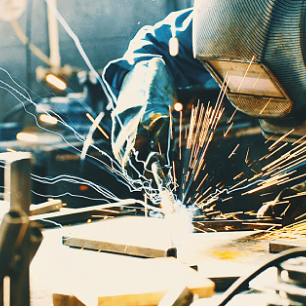Jump to:
What CWIs Must Know about the Latest AWS A3.0 Edition
AWS formed the A2 Committee on Definitions and Symbols to establish standard terms and definitions that aid in communicating welding information. The new edition of AWS A3.0M/A3.0:2025, Standard Welding Terms and Definitions Including Terms for Additive Manufacturing, Adhesive Bonding, Brazing, Soldering, Thermal Cutting, Thermal Spraying, and Nondestructive Examination, is the major product of the work done by the AWS A2B Subcommittee on Definitions in support of that purpose.
The evolution of AWS A3.0M/A3.0 is shown in the table below:
The present publication, AWS A3.0M/A3.0:2025, defines over 1500 terms, with numerous illustrations to support and clarify the definitions as well as classification charts and corollary information related to welding and allied processes. This latest revision includes significant enhancements to the following:
- Additive manufacturing
- Gas metal arc welding (GMAW) process variations
- Hybrid welding
- Nondestructive examination
- Plastic welding
- Qualification – procedure and performance
- Submerged arc welding process variations
- Temper bead welding
- Waveform-controlled welding
- Welding test positions
New terms and definitions have been introduced, and existing terms and definitions have been modified in these and other areas. Of significance are new/modified terms and definitions for surfacing weld test positions; procedure and performance qualification for brazing, soldering, and welding; gas metal arc welding transfer modes and process electrical variations; submerged arc welding process variations with multiple electrodes; nondestructive examination methods and their application; and measurement of arc energy for waveform-controlled welding.
About Nondestructive Examination
With slight modifications for clarity, Clause C1.5.6 in Annex C, nondestructive examination, states the following:
The standard term nondestructive examination (NDE) was first introduced in the 2001 edition of AWS A3.0. With several recognized choices, the subcommittee spent several meetings discussing which would be selected as the standard term. This even included solicitation of input from other organizations, including the American Society of Mechanical Engineers (ASME), American Society for Nondestructive Testing (ASNT), and American Society for Testing and Materials (ASTM). Also part of this selection process was the review of dictionary definitions for examination, evaluation, inspection, and testing. This exercise also fell short of revealing the best choice, as each was considered a synonym of the others.
The attention then turned to a look at the general usage of these terms as applied in the welding and welding quality control community. Below are definitions for these activities in terms of their general application:
(1) examination. The act of observing an object in terms of its appearance, size, shape, or other physical characteristic.
(2) evaluation. The act of comparing attributes with some standard.
(3) inspection. A general term describing the activities associated with the overall quality assurance function, including activities occurring before, during, and after the welding activity.
(4) testing. The act of determining the suitability of a material or object for its intended purpose by directly subjecting it to service conditions.
Based on the above, and after significant discussion, the choice for the standard term became nondestructive examination (NDE) and it was defined as the “process of determining acceptability of a material or a component in accordance with established criteria without impairing its future usefulness.” At that time, the other choices were each listed as a “nonstandard term when used for nondestructive examination.”
While preparing the 2020 edition of AWS A3.0, the subcommittee revisited these definitions from the standpoint of whether listing the alternate terms as being nonstandard was technically correct regarding their common usage. Since all of the forms are used by various standards, reference documents, and industry segments, it was decided that rather than being nonstandard terms, they are really alternatives to the standard term, with all having the same general meaning. It was agreed that nondestructive examination should remain the standard term, but the definitions for the others were listed as “See nondestructive examination.” While this may appear to be a minor change, it is quite significant. This means that any of these term variations may be used and they all have the same meaning.
At this same time, the existing definition also came into scrutiny. What was questioned was the portion of the definition stating “. . . determining the suitability of some material or component for its intended purpose . . .” It was realized that the act of performing nondestructive examination could not, in and of itself, guarantee that a component was suitable for its intended purpose. As a result, the new definition was changed to the “process of determining the acceptability of a material or a component in accordance with established criteria without impairing its future usefulness.”
Relevant Changes for CWIs
The latest edition of A3.0 contains many changes that affect Certified Welding Inspectors (CWIs), particularly regarding the addition and modification of terms and definitions related to procedure and performance qualification.
When a CWI is asked to review documentation related to procedure and performance qualification, it’s not uncommon for the terminology to be inconsistent. To clarify, the A2B Definitions Subcommittee reviewed AWS’s B2 qualification standards and other industry standards. Then, it attempted to standardize the terms and their definitions to describe the activities and documentation types.
Although the terms certification and qualification are often used interchangeably, their meanings are significantly different, as follows:
- Certification. A credential attesting to a type or level of qualification.
- Qualification. See performance qualification and procedure qualification.
- Performance qualification. Demonstration of an individual’s ability to produce an acceptable test coupon in accordance with an applicable qualification standard. Variations of this term are brazer performance qualification, brazing operator performance qualification, solderer performance qualification, soldering operator performance qualification, welder performance qualification, and welding operator performance qualification.
- Procedure qualification. Demonstration of a process for joining or surfacing using specified materials and techniques resulting in a test coupon meeting applicable requirements.
Therefore, qualification relates to the activity used to demonstrate that a particular set of variables can produce an acceptable result in terms of mechanical properties and soundness (procedure) and the individual’s capability to apply a qualified procedure that leads to an acceptable result in terms of soundness (performance). Certification, on the other hand, is the documentation that verifies the individual’s qualification.
Another term used in AWS documents is qualifier, which is defined as “an employer, organization, or individual(s) responsible for conducting, supervising, and documenting qualification testing in accordance with an applicable standard. See also AWS Qualifier, AWS Welder Performance Qualifier, and AWS Welding Procedure Qualifier.”
This term is associated with various AWS personnel certification programs. For instance, an AWS Qualifier is an individual employed by an Accredited Test Facility to monitor and document the qualification of AWS Certified Welders. AWS also administers the CWI endorsements Welder Performance Qualifier (WPQ1) and Welding Procedure Qualifier (WPQ2). Passing the WPQ1 examination qualifies an individual as an AWS Welder Performance Qualifier, and passing the WPQ2 examination qualifies them as an AWS Welding Procedure Qualifier.
Transfer Mode Clarification
Another item to note is not a change but a clarification of the transfer modes in the GMAW process. With the advent of inverter-based power sources and computer-controlled output, it is essential to understand the metal transfer mode is not entirely dependent on the power source output mode selected. The transfer mode is a visual observation of how the metal is transferred across the arc. A power source set in pulsed mode may still be creating an arc that is in short-circuiting transfer mode. This may result in a discrepancy with the applicable code. The three main GMAW transfer modes are short-circuiting, globular, and spray. The spray mode has the following subsets: conventional (CV) spray, pulsed spray, and rotational spray. The short-circuiting mode has two main subsets: CV and pulsed short-circuiting.
The better a CWI understands these terms and their correct usage, the better prepared that individual is to perform a CWI’s essential duties.
Final Thoughts
It must be understood that the A2B Definitions Subcommittee cannot be the ultimate judge regarding the preferability, acceptability, or correctness of any term for a specific situation. Such determinations are left to the discretion and opinion of the welding terminology user. One exception: When using a nonstandard term may endanger personal safety, that term is defined as both nonstandard and incorrect. The A2B Definitions Subcommittee has neither the authority nor the desire to dictate welding terminology but considers it within its province to establish standard and nonstandard terms.
We encourage you to acquire AWS A3.0, keep it handy, and consult it during inspection and reporting to ensure you follow the most accurate and latest definitions and reflect those in your reports.
This article was edited by Carlos Guzman, Inspection Trends editor, using excerpts from A3.0M/A3.0:2025 and contributions from AWS’s A2B Subcommittee on Definitions members Larry Barley (OTC-Daihen); David Beneteau (CenterLine); and A2B Subcommittee on Definitions Chair and AWS 2025 President Richard Holdren (ARC Specialties).


